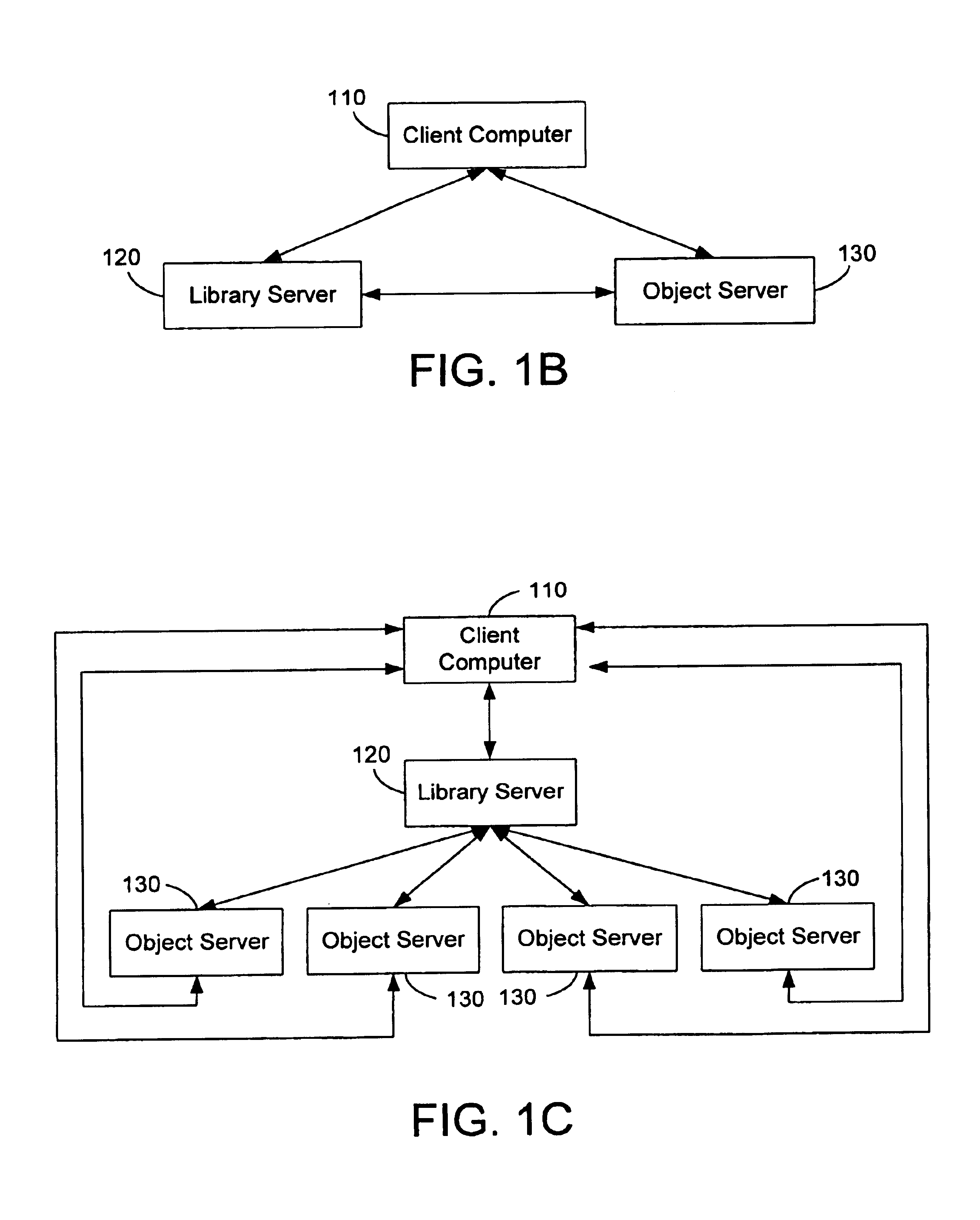Data processing system
a data processing system and database technology, applied in the field of database management systems, can solve the problems of limited speed at which multimedia applications execute, large average size of multimedia information, and limited access to multimedia objects in databases
- Summary
- Abstract
- Description
- Claims
- Application Information
AI Technical Summary
Benefits of technology
Problems solved by technology
Method used
Image
Examples
Embodiment Construction
[0029]In the following description of embodiments of the invention, reference is made to the accompanying drawings which form a part hereof, and in which is shown by way of illustration specific embodiments in which the invention may be practiced. It is to be understood that other embodiments may be utilized and structural and functional changes may be made without departing from the scope of the present invention.
Overview
[0030]This invention addresses multiple requests to manipulate (i.e., store or retrieve) an object. In particular, each request to store or retrieve an object is assigned a unique identifier. This enables distinguishing object copies from each other and distinguishing object copies from the original object.
[0031]The unique identifier is an element handle. An element handle refers to a memory address allocated to each individual storage or retrieval request submitted by threads of an application process. A process is an executing program, and a thread is a unit of w...
PUM
 Login to View More
Login to View More Abstract
Description
Claims
Application Information
 Login to View More
Login to View More - R&D
- Intellectual Property
- Life Sciences
- Materials
- Tech Scout
- Unparalleled Data Quality
- Higher Quality Content
- 60% Fewer Hallucinations
Browse by: Latest US Patents, China's latest patents, Technical Efficacy Thesaurus, Application Domain, Technology Topic, Popular Technical Reports.
© 2025 PatSnap. All rights reserved.Legal|Privacy policy|Modern Slavery Act Transparency Statement|Sitemap|About US| Contact US: help@patsnap.com



